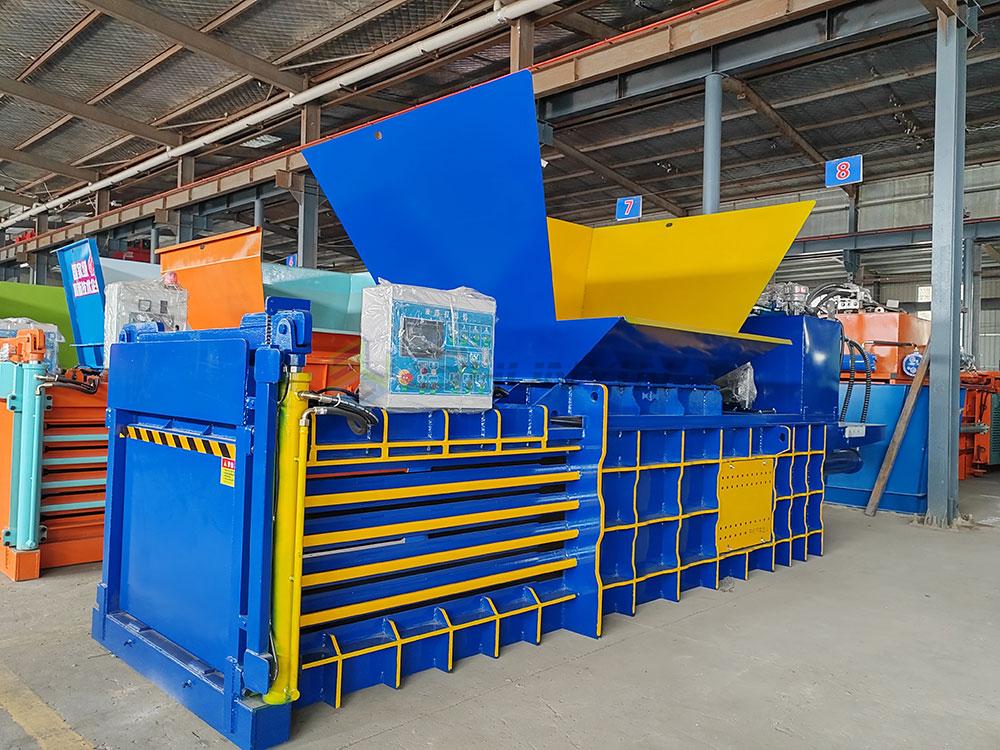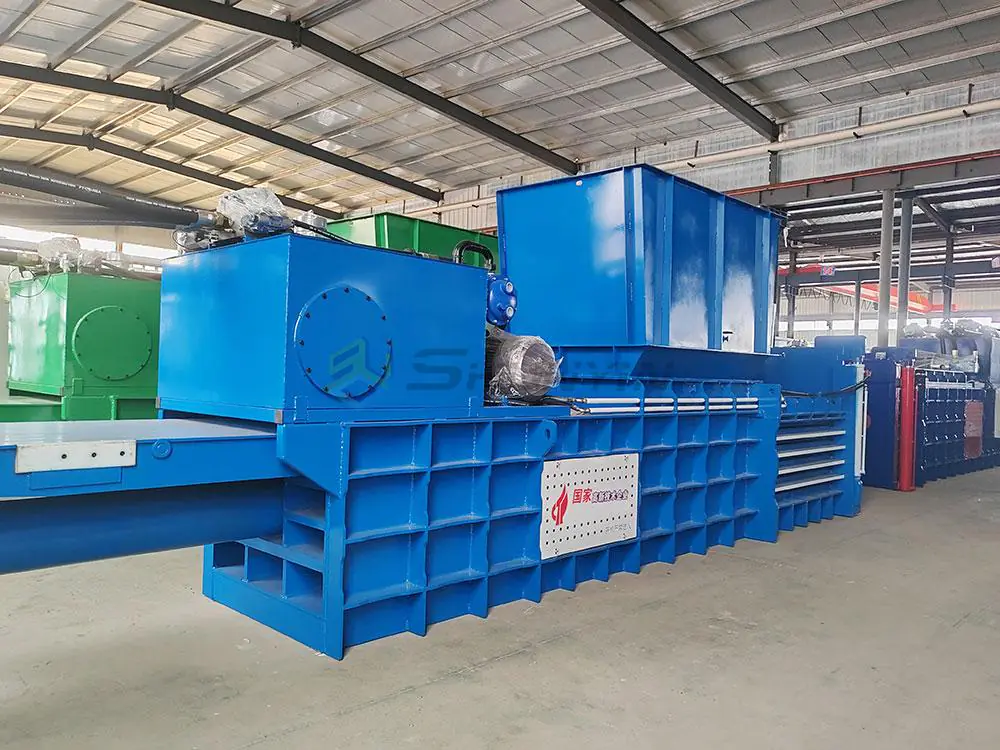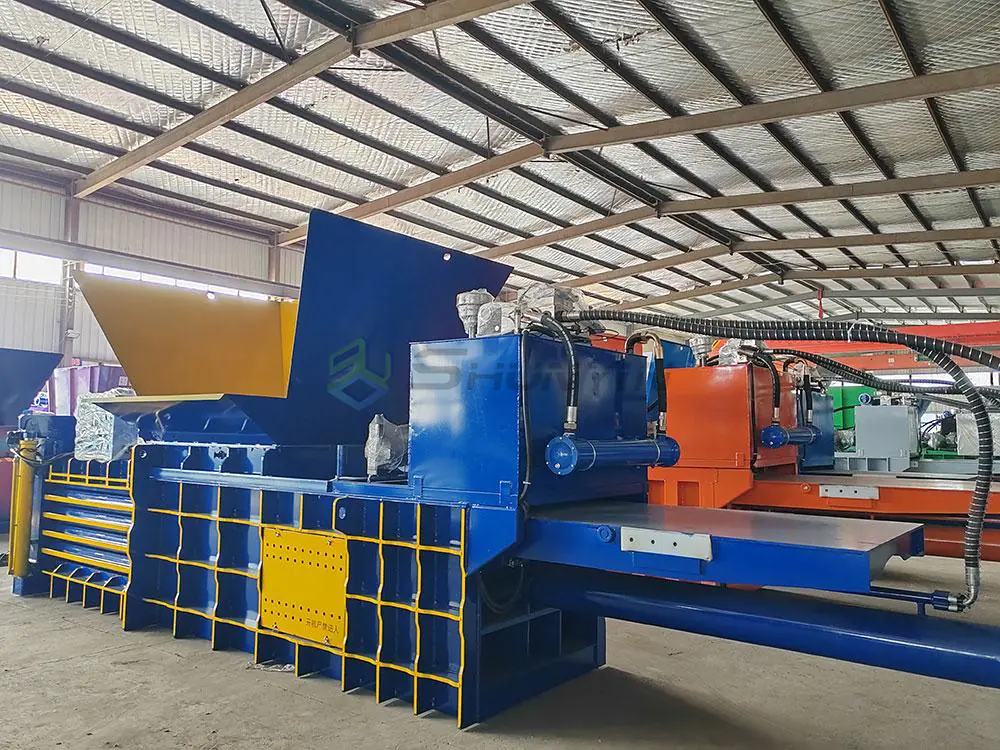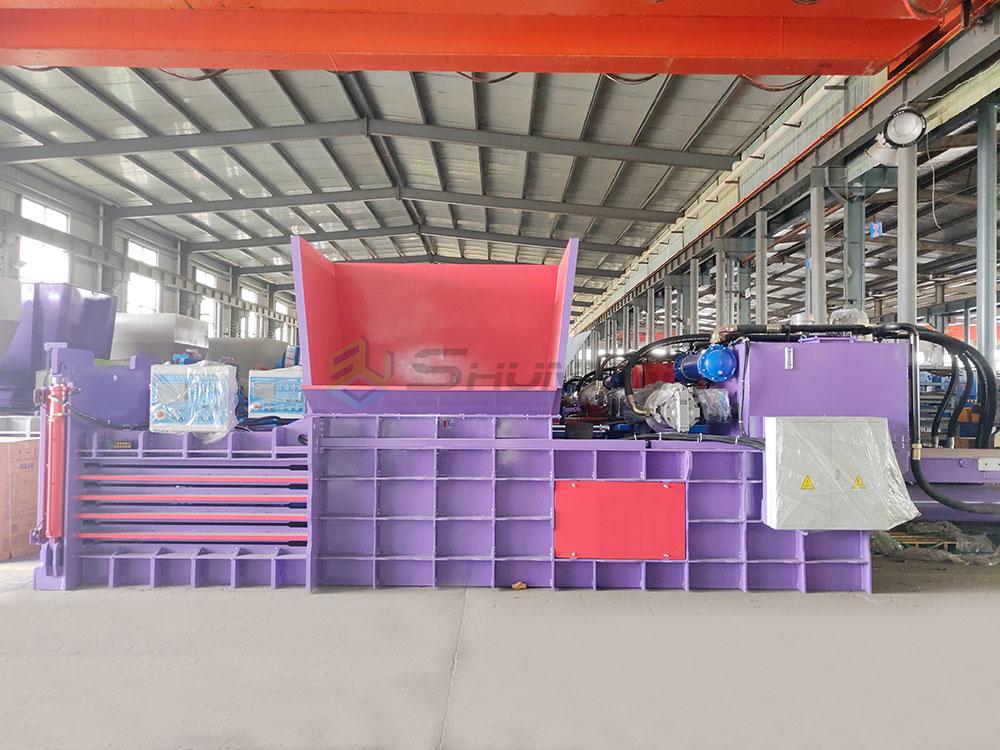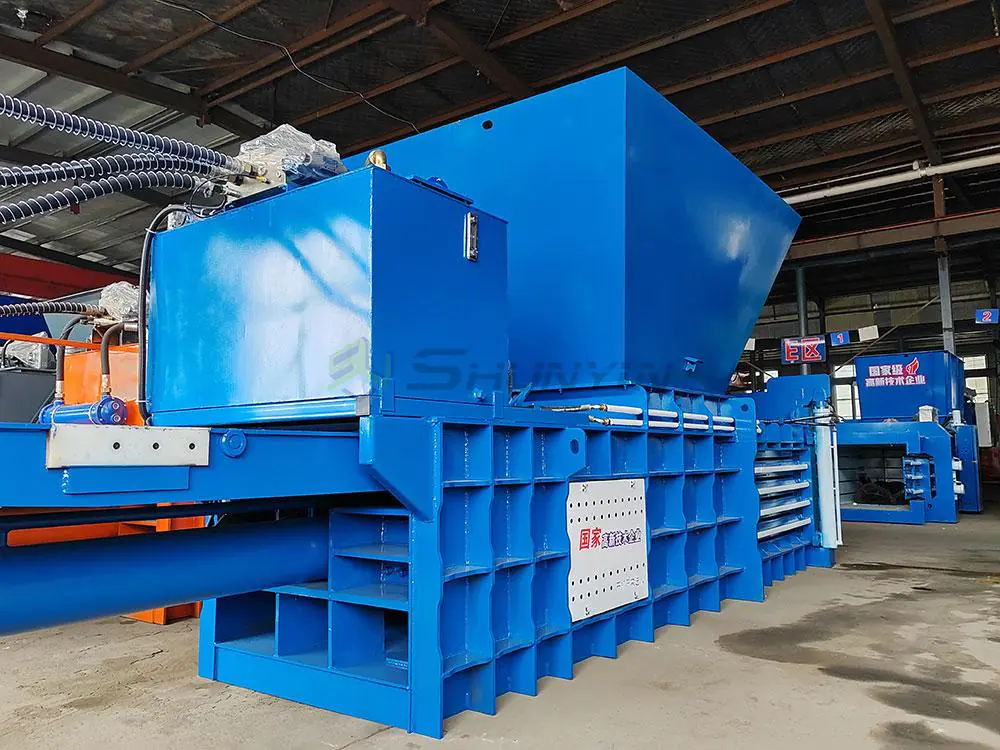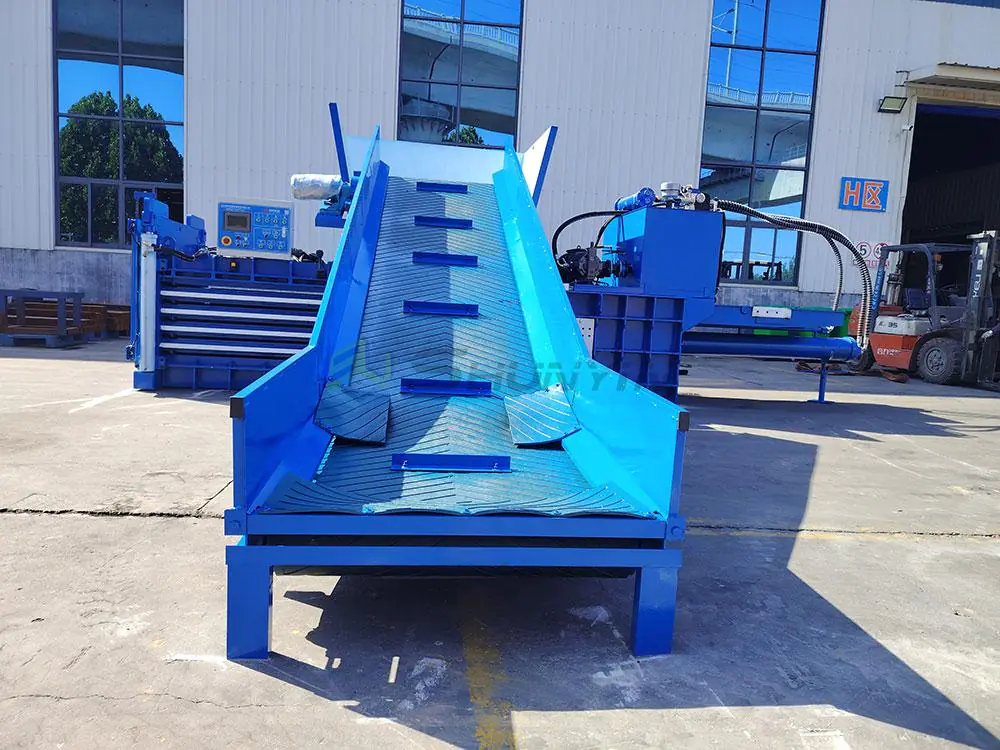
When Canadian client Lambert first saw our 2000kg bales stacked neatly in his warehouse, he asked, "How does this industrial monster turn loose trash into these uniform blocks?"
A baler machine is a hydraulic compactor that densifies recyclables into transportable bales using 12-80 tons of force. Our models feature dual compression chambers, programmable logic controllers, and auto-tying systems that process 2-45 tons of material/hour while reducing processing costs by 38-67% through optimized hydraulic efficiency.
Four fundamental questions reveal why 83% of large recyclers invest in this equipment despite initial costs. Here’s what our Malaysian client’s 14-month case study taught us about operational transformation.
What Is the Purpose of a Baler Machine?

Our Japanese client Marubeni eliminated 92% of their waste removal trucks after installing two 33-ton balers:
Operational Impact Analysis
| Parameter | Before Baler | After Baler | Improvement |
|---|---|---|---|
| Waste Volume | 850m³/week | 120m³/week | 86%↓ |
| Transport Cost | $7,200/month | $2,800/month | 61%↓ |
| Scrap Revenue | $0 | $11,500/month | ∞ |
| Processing Time | 27 hrs | 6.5 hrs | 76%↓ |
| Worker Injuries | 3.1/year | 0 | 100%↓ |
Additional benefits we quantified:
- 17% property tax reduction (smaller waste areas)
- 23% lower insurance premiums
- ISO 14001 certification attainment
- 12% staff productivity increase
What Is a Baler in Waste Management?

Singapore’s largest recycling plant processes 62 tons daily using our systems:
Waste Stream Transformation
| Material | Loose Density | Baled Density | Value Increase |
|---|---|---|---|
| Cardboard | 80kg/m³ | 650kg/m³ | 37%↑ |
| PET Bottles | 45kg/m³ | 820kg/m³ | 43%↑ |
| Aluminum Cans | 240kg/m³ | 1,100kg/m³ | 28%↑ |
| Textiles | 130kg/m³ | 450kg/m³ | 19%↑ |
Critical waste management1 applications:
- Meeting EU landfill diversion targets
- Automated material sorting via barcodes
- Hazardous waste containment (asbestos/chemicals)
- Fire risk reduction through compression
What Does a Bailer Do?

Our 22kW machines complete material processing in six precise stages:
Operational Cycle Breakdown
| Stage | Action | Technical Specs | Duration |
|---|---|---|---|
| 1. Feeding | Conveyor intake | 1.5m width | 18 sec |
| 2. Pre-press | 10-ton compression | 8mm steel plate | 32 sec |
| 3. Main press | 35-ton pressure | 250bar hydraulics | 47 sec |
| 4. Tying | Auto steel strapping | 6 straps/bale | 22 sec |
| 5. Ejection | Hydraulic pusher arm | 2m stroke | 11 sec |
| 6. Reset | Chamber clearance | PLC sensors | 7 sec |
Performance statistics from Vietnam client IPN:
- Throughput: 14.3 tons/hour (mixed waste)
- Energy consumption: 0.81kWh/ton
- Noise level: 72dB (OSHA compliant)
- Oil temperature: 45-55°C (maintained)
What Is a Cardboard Baler?

Our $28,400 customized cardboard baler2 helped Toronto’s GreenCycle boost profits by 41%:
Cardboard Baling Economics
| Parameter | Specification |
|---|---|
| Machine Cost | $28,400 FOB China |
| Daily Input | 6.2 tons (2,070 boxes) |
| Bale Output | 21 bales (295kg each) |
| Bale Price | $105/ton |
| Monthly Revenue | 6.2 × 26 × $105 = $16,716 |
| Operating Cost | $3,920 |
| Net Profit | $12,796/month |
| ROI Period | 2.4 months |
Critical technical features:
- 25-ton compression force (adjustable)
- Auto moisture detection (<12% target)
- RFID material tracking tags
- Emergency stop circuit (6 points)
Conclusion
Modern balers transform waste liabilities into profit centers through smart engineering. With 176 installations across 18 countries, our ISO-certified machines guarantee performance. Request your profitability analysis – includes localized scrap price forecasts.


